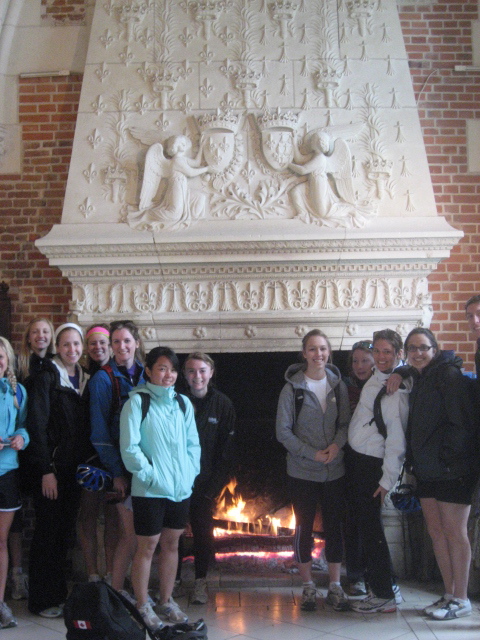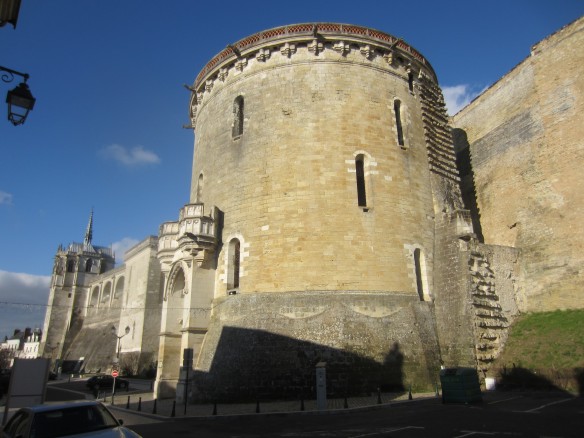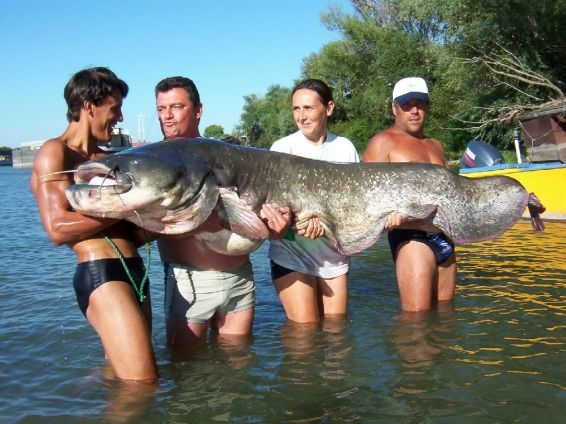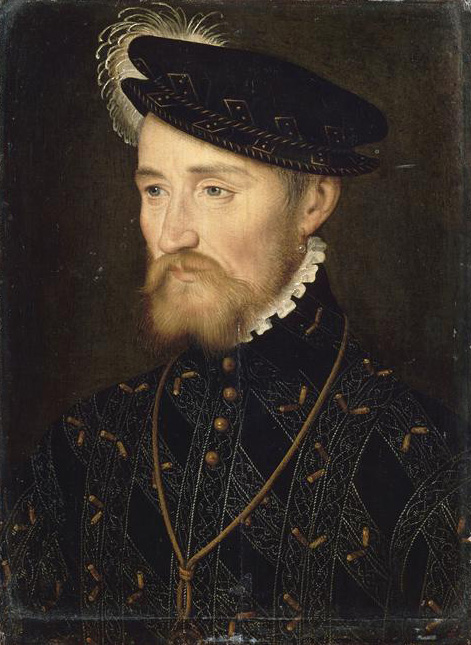Biking from Montlouis-sur-Loire to Amboise, 12 km
At the end of last week’s article we enjoyed a winetasting with M. and Mme. Blot at the Domaine de la Taille aux Loups in Husseau, on the east side of Montlouis-sur-Loire. Leaving the domaine, we head east along the Loire à Vélo to Amboise, where we visit the great royal chateau. To see our route from Montlouis to Amboise in Google Maps, click here. Next week we walk up the rue Victor Hugo in Amboise to Clos-Lucé, where Leonardo da Vinci spent the last three years of his life.
Our route to Amboise is not along the Loire River, but up on the plateau, where we share the quiet roads with an occasional car. After a few kilometers we pass by the Aquarium du Val de Loire, which offers a convenient rest stop (02 47 23 44 44) for those who did not stop at the Taille aux Loups. I was biking this route in the summer of 2008, planning our Western student bike trip for 2009, and looking for a rest stop on a rural plateau with no cafes.
I came around a corner and there was the Aquarium, to which we had taken our young children during summer vacations in Touraine two decades earlier. I had always come to it from the opposite direction by car, and indeed I had forgotten its existence. What a surprise to find it there on my proposed bike route. The perfect rest stop: if you don’t want to visit the aquarium, buy a snack at the counter, to thank them for the use of the washrooms.
This is one of the largest fresh water aquariums in Europe, with some 10,000 fish in 4 million litres of water. The emphasis is on fresh water European fish, but there are also various exhibits involving sea water, including tropical fish, a coral reef, and sharks. My favorite fish is the silure, which looks like an enormous catfish out of a horror movie. They hang out on river bottoms and seem too fat too float or swim. They can be up to 2.5 m long and weigh up to 250 kg, making them the largest fresh water fish in Europe. They do well in the lower reaches (below 400 m altitude) of the significant rivers of France, including the Loire, where a reduction in oxygen (through pollution) can make life difficult for other sorts of fish.
Leaving the Aquarium, our route continues east, and then turns south, down the hill past the impressive St. Denis Church to the Loire and Amboise. From the bridge over the Loire we have a fine view of the Chateau Royal d’Amboise.
In the late 15th century the chateau was substantially expanded and renovated by Kings Louis X1 (who reigned 1461-1483) and Charles VIII (1483-1498). The work occurred just before the adoption by French monarchs of the new Italian Renaissance styles in architecture, and Amboise maintained the look of a fortified castle. Later renovations by Francois I (1515-1547) and Henri II (1547-1559) introduced the new Italian styles to the chateau. Our visit inside the chateau takes us to the Royal Apartments, which include a magnificent Council Room, with a double vaulted stone ceiling and beautiful fireplaces at either end.

3. Students from the Western 2010 bike trip gather in front of a roaring fire in the Council Room on a very cold spring day.
The large round tower on the left of the main building in photo 2 is the Minimes Tower, housing a large spiral ramp which was used to bring horses with carts up to the terrace to provision the chateau. The views from the tower are spectacular. Looking west we can see the Boys’ Tower at the western edge of the Chateau terrace, the roofs of Amboise, and the massive St-Denis Church in the background.
Looking east, we can the Loire winding down to Amboise.
The beauty and peace of the chateau and the surrounding town may make it hard to imagine that they were the site of cruel, bloody events that took place here in March, 1560. Those events have left their mark on French history.
The Amboise Conspiracy
Religion and politics should not be mixed. When they are, the result is often disorder and bloodshed, as France experienced in the seven decades after 1560. Among the best known events of the Religious Wars in France are the Saint-Barthélemy Massacre in 1572, and the assassinations of two kings, Henry III in 1589, and his son Henry IV in 1610. A portent of all this bloodshed were some brutal killings in Amboise in March, 1560, which had both religious and political dimensions.
On the religious side, it all began with a German priest, Martin Luther, who in 1517 wrote his “Disputation of Martin Luther on the Power and Efficacy of Indulgences” (also known as the Ninety-Five Theses); he may have affixed them to the door of the church in Wittenberg, although many modern historians believe he simply sent them to his bishop. Luther argued that salvation could not be bought, but only achieved through faith in Jesus Christ. He wrote that our knowledge of God comes from the Bible, thereby disputing the authority of the Pope and his hierarchy. These views were offensive to the established Church, and in 1521 Luther was excommunicated by Pope Leo X. Today in Germany there are roughly equal numbers of Roman Catholics and Protestants.
Luther’s ideas travelled quickly through Germany in a 16th century version of social networking involving pamphlets and ballads.[1] His doctrines also spread to other countries in Europe. In France, the Reform movement was led by John Calvin, born in 1509 in Picardy. In university, Calvin was attracted to humanism, and then to religious Reform. His views forced him to flee to Switzerland in 1535.
The following year he published his Institutes of the Christian Religion, setting out his Reform doctrines. Despite intermittent persecution, the number of Reformers or Protestants in France (or Huguenots, as their enemies called them) grew rapidly after 1850, especially among the nobility. The criticism of each other’s church by Reformers and Roman Catholics was often bitter and extreme; each sought control of the French state as a means to control the rival church.
These tensions came to a head with the sudden death of Henry II, after a jousting accident in June, 1559. His son became king at just 15 years of age, as François II. Through an arrangment concluded when he was four, François was married at age 14 to Marie Stuart, Queen of Scots (later imprisoned and put to death by Elizabeth I of England). When he became King, two of his wife’s uncles, the duc de Guise and his younger brother, the cardinal de Lorraine, became his chief advisors. They quickly took control of the government. The painting below of the duc de Guise is by François Clouet, the official painter of King François I.
The Guises became known for their violent suppression of Protestantism. The House of Guise was found by Claude de Lorraine (1495-1550), a valiant military commander under François I, who in appreciation gave him the title of 1st duc de Guise. In 1525 the duc de Guise suppressed a revolt of Anabaptists, a Protestant sect, in a massacre in Saverne, Alsace, which earned him the title of “the Great Butcher.” His son François, the 2nd duc de Guise, organized the massacre at Amboise in 1560. François’ son Henri, the 3rd duc de Guise, played a role in the St. Bartholomew’s Day Massacre of Protestants in Paris in 1572, and later founded and led the Catholic League (la Ligue Catholique), devoted to the anti-Protestant cause. He was assassinated at Blois in 1588 on order of King Henry III, a story we will tell when our bike trips arrive in Blois.
In early 1560 members of the Huguenot nobility began plotting to kidnap the King, and return him to power after they had removed the Guises. A meeting of the conspirators was held in Nantes on Feb. 1, 1560. The plot was discovered and the King was moved from Blois to Amboise, where the Chateau was more defensible. The conspirators were poorly organized, and an attack on March 17, at the gate of the Bons-hommes under the Heurtault Tower on the north side of the Chateau, was quickly repulsed by the troops of les Guises.

7. The Heurtault Tower, with the gate of the Bons-homme. In the distance, at the top of the wall, is the St-Hubert Chapel.
There followed a bloody massacre of all the conspirators and their troops. The town quickly ran out of gallows and began hanging Huguenots from the balconies of the chateau. Others were decapitated. “The cobblestones of the interior courtyards were red and sticky from the blood of decapitated nobles.” [2] An engraving by Jacques Tortorel and Jean Perrisin from 1570 shows the horror of the scene enacted in Amboise over several days. Tortorel and Perrisin were Protestant artists in Lyon. In 1570 they published in Geneva a collection of engravings on the religious conflicts in France between 1559 and 1570. [3]
The engraving shows the north wall of the chateau, as seen from the direction of Photo 2. In addition to the troops present, there are a good many spectators, including, near the lower right corner, a woman with a young boy. The Huguenots are to be taught a lesson.
Two men are being thrown from the chateau balcony with ropes around their necks. Five more are already hanging, along with a sixth on a gallows in the center of the engraving. The latter is the leader of the conspiracy, Jean de Barry, lord of la Renaudie manor in Périgord. La Renaudie was killed in a skirmish on March 19 in the Forest of Chateau-Renault as he headed toward Amboise with a small troop. His body was displayed as the engraving shows, and then chopped into five pieces, each hung at a gate to the chateau.
In the left foreground, a gallows carries three heads; headless bodies lie nearby. A Huguenot Captain, M. de Villemongis, about to be decapitated with a sword, seems ready for his fate, as he washes his hands in the blood of those who have gone before him. [4]
This last figure reappears a century later, as the great French historian Jules Michelet describes how those who had fought with the Huguenot forces faced death that day in Amboise:
“Dying, they raised their loyal hands to God. One of them, M. de Villemongis, dipped his in the blood of his comrades already executed, and raising his red hands, cried in a strong voice, ‘This is the blood of your children, Lord! You will avenge it!'”[5]
His words foretold 70 years of cruel religious wars in France.
[1] “How Luther went viral,” The Economist, December 17, 2011, pp. 39-41.
[2] Jacques Debû-Bridel, La Conjuration d’Amboise (Paris: Editions Mondiales, 1963), pp. 203. “Le pavé des cours intériueres était tout rouge et gluant du sang des gentilshommes décapités.”
[3] A remarkable exposition of the work of Tortorel and Perrisin was held in 2006 at the Musée de la Rénaissance at Chateau d’Ecouen north of Paris, in collaboration with the Bibliothèque National de France. The title was D’encre et de Sang – Les guerres de Religion gravées par Tortorel et Perrissin (Ink and Blood – the Wars of Religion engraved by Tortorel and Perrissin). A summary of the exposition can be downloaded from the museum website, musee-renaissance.fr.
[4] Villemongis is identified by Nicolas Le Roux, Les Guerres de Réligion 1559-1629 (Editions Belin, 2009), pp. 42-43, where the engraving in Photo 4 is also shown, although in a mirror image (left and right are reversed, as compared to Photo 4).
[5] Jules Michelet, Histore de France, le XVIe siècle, II, Un siècle partagé, La Réforme (Lausanne, Editions Rencontre, 1966), p. 350. “Ils levaient en mourant leurs mains loyales à Dieu. L’un d’eux, M. de Villemongis, trempa les siennes dans le sang de ses amies déjà exécutés, et, les élevant toutes rouges, cria d’une voix forte: ‘C’est le sang de tes enfants, Seigneur! Tu en feras la vengeance!'”
Photograph 1 is from the website http://www.magicsilure.fr. Photographs 6 and 8 are from the Wikipedia Commons, commons.wikimedia.org. All other photographs were taken by the author.







I have been reading about the wars between Catholics and Protestants in a wonderful book, “How to Live: A Life of Montaigne in one question and twenty attempts at an answer” by Sarah Bakewell (Chatto & Windus, 2010). I highly recommend it. He seems the one sane character in an insane world at some points. In some ways, it was extraordinary how he survived the turmoil and turbulence.
We recently steyad at the lovely Chateau de Razay in nearby Cere La Ronde and so followed your recommendation for this lunch menu at the Hotel de la Gare in Montrichard. It was a great tip and the best deal in the area it seems for solid French country fare. Among the three main course choices was a nice roast beef with roasted potatoes that pleased even our finicky children. The cheese and dessert cart were copious and varied and combined with the large appetizer buffet, a truly amazing bargain at only 12 Euro! A bit more expensive (16 Euro) but of superb quality is the lunch menu at Val de Vienne in Sazilly between Chinon and L’Il Bouchard. Perhaps you know it already. Thanks again!
Hi! The engraving you sare here is by Frans Hogenberg, who based his version on Perrissin and Tortorel’s original (which is flipped around with respect to Hogenberg’s — google the image and you’ll see what I mean).